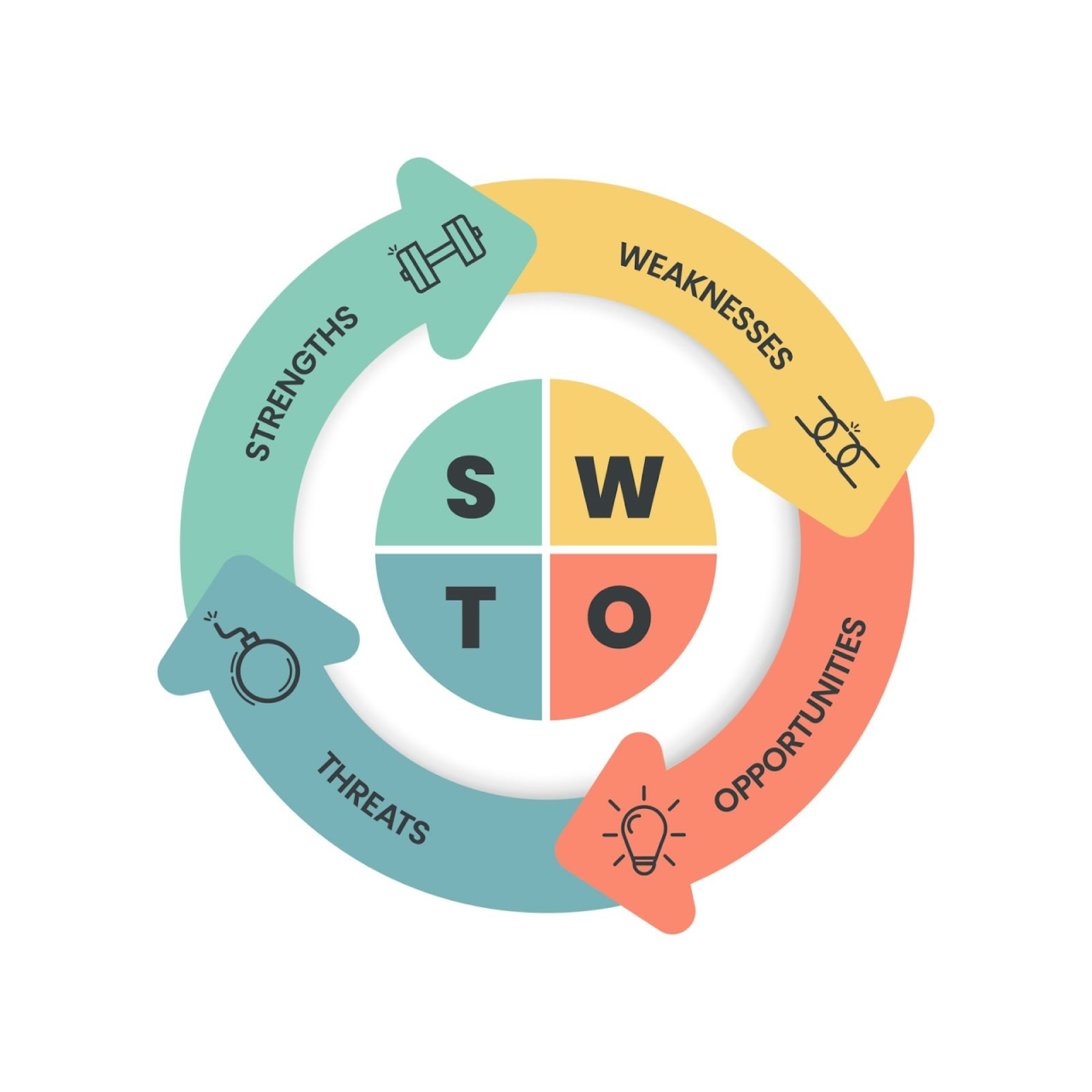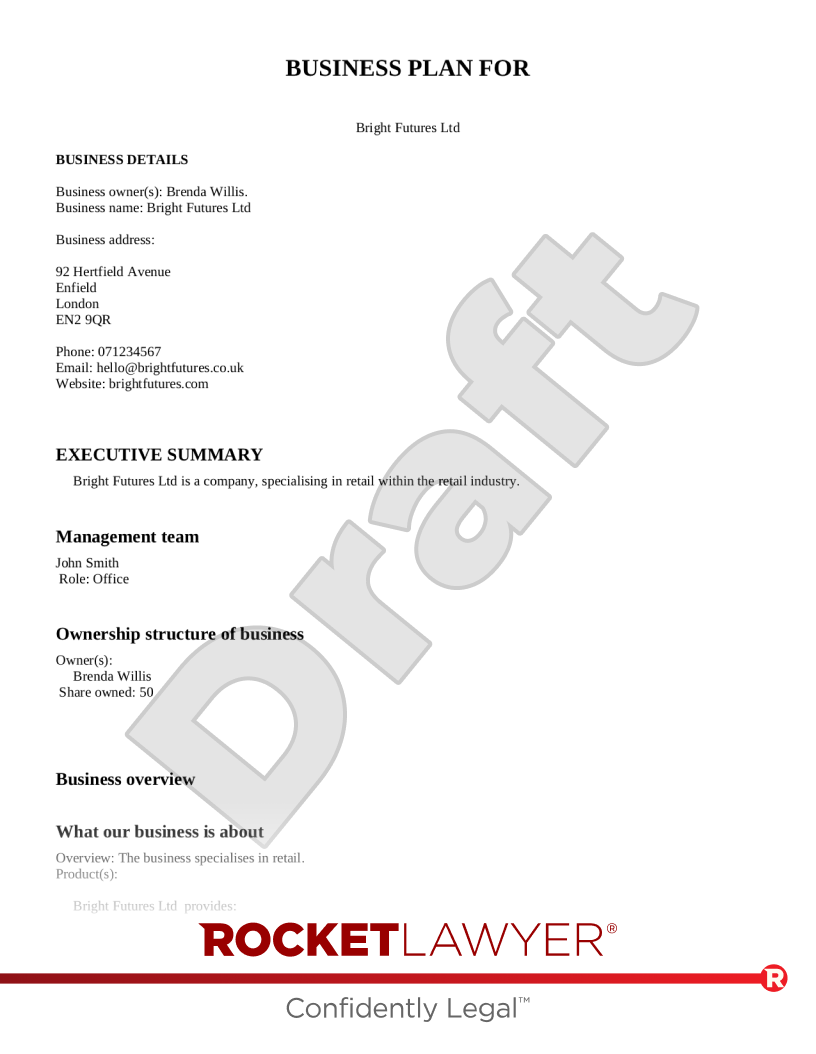What is a SWOT analysis?

SWOT analyses are frameworks that help businesses assess and evaluate their competitive position in order to strategically plan the business’s next steps.
A SWOT analysis can increase your business awareness and provide a valuable addition to your Business plan or project plan. It’s split into four sections - Strengths, Weaknesses, Opportunities, and Threats - with each section detailing the various relevant attributes and downsides to your business and the industry.
SWOT analyses are sometimes represented visually in the form of a matrix.

Examining your business and the sector in which it operates is intrinsically valuable, as it helps you to make strategic decisions and prevent disasters by planning ahead. A SWOT analysis enables a business to have an objective, evidence-based and data-informed examination of the strengths and weaknesses of the business, its initiatives and/or its industry.
Brainstorming is often a good way to begin a SWOT analysis; simply jot down any observations or ideas that come to mind and flesh them out or edit them later.
When should a SWOT analysis be used?
A SWOT analysis isn’t always needed, however, it is useful whenever a business plans to take a large step in a new direction. For example:
-
when you want to start a new business - a SWOT analysis is a crucial part of your Business plan to help you clearly set out the strengths, weaknesses, opportunities and threats to your proposed business
-
before implementing any large changes (eg restructuring your business) - this can help you determine how such changes may affect the business
-
before launching new business initiatives (eg projects, products or services) - this can help you determine whether the initiative has potential to succeed
-
to identify opportunities for growth and improvement
Components of a SWOT analysis
SWOT analyses are divided into the following four sections:
Strengths
This is where you can highlight what your business excels at, whether it’s the business’s skill set, industry knowledge or specialist resources.
Whatever gives you an advantage in the marketplace can be considered a strength. When considering your business’s strengths consider points like:
-
do you have any specific intellectual property rights?
-
have you secured a retail space with a particularly high footfall?
-
have you acquired sole rights to sell a product in a particular region (eg as an agent)?
-
do you have a loyal customer base?
-
do you have a unique brand with strong brand recognition?
-
has your business developed unique technology or does it use technology in a new, unique or innovative way?
Think about the advantages your business holds compared to your key competitors. If you’re able to sell a product at a reduced cost due to lower overheads - or can provide a higher quality service for the same price - this will automatically put you at an advantage.
Weaknesses
Weaknesses are any things that stop your business from performing at its optimum level. If your business lacks certain skills (eg if it lacks an effective salesperson or certain type of technical expert), you’ll need to find a way of overcoming this. For example, by using external contractors or working with mentors that can provide necessary guidance.
You should also specify how you plan to deal with any other lack of resources (eg a lack of specialist machinery), as well as addressing any weaknesses compared to your competitors.
To determine what your business’s weaknesses are, consider asking yourself:
-
where is the business underperforming and why?
-
what improvements can be made to the business? How can this help overcome its weaknesses?
-
what resources does the business need to improve its performance?
-
how does the business rank against its competitors? What steps can be taken to improve the business’s performance?
Opportunities
Opportunities are favourable external factors that give your business a competitive advantage. Opportunities typically stem from any of a business’s existing strengths and weaknesses that can put the business in a stronger competitive position. To determine your business’s opportunities, consider points like:
-
what resources does the business need to overcome its weaknesses?
-
are there any gaps in the market that the business can fill?
-
what new trends can the business take advantage of?
-
are there any new markets the business can branch into (eg different industries or different geographic locations)?
Essentially, the opportunities section allows businesses to make a general case as to why they will succeed in a certain market (eg umbrellas in rainy England) as well as detailing any specific opportunities (eg umbrellas which tap into a current fashion trend) and the possibility of claiming a niche market position (eg a reputation for durable umbrellas).
Threats
Threats are any external factors that you have no control over and which may detrimentally affect and threaten your business. For example, rising costs, pandemics, increasing competition or change in the competitive landscape.
Try and be frank about any potential reasons your business may not succeed, particularly in light of existing or possible future market conditions. To determine potential threats to your business, consider points like:
-
what industry changes are cause for concern?
-
what upcoming trends or innovations may negatively affect your business?
-
where, why and how are competitors outperforming your business?
For any threats identified, you should put in place detailed Contingency plans for how to deal with them. Contingency plans allow a business to plan for an outcome other than what was expected. They can help solve or alleviate any threats to the business by allowing it to adjust to different circumstances and/or outcomes. For more information, read Business contingency plans.
How to carry out a SWOT analysis
A SWOT analysis requires a detailed assessment and evaluation of the position a business is in. Generally speaking, this analysis will involve the following steps:
-
defining your objective - specify a clear objective for the SWOT analysis, focusing on a particular goal (eg evaluating the viability of a new product rollout)
-
collect resources and data - determine what data the business needs to carry out the SWOT analysis. Then assess all available data sets, identifying data limitations and understanding how reliable any external data sources are. Consider assembling a diverse team with varied perspectives to enhance the quality of the analysis (eg sales people, marketing experts and engineers)
-
compile your ideas - everyone involved in the SWOT analysis should list what they believe to be the strengths, weaknesses, opportunities and threats of the business in relation to the previously identified objective. Consider doing this in a ‘brainstorming’, ‘white-boarding’ or ‘sticky note’ session where everyone is encouraged to share their ideas
-
refine all ideas - review the ideas listed by your team, cleaning them up and refining the list by prioritising the most significant strengths, weaknesses, opportunities and threats. Engage in discussions and, where relevant, consider involving upper management, to help rank priorities
-
develop your strategy - convert the list of strengths, weaknesses, opportunities and threats into a strategic plan, which should work towards the objective you initially identified
Ask a lawyer if you have any questions about carrying out a SWOT analysis.




